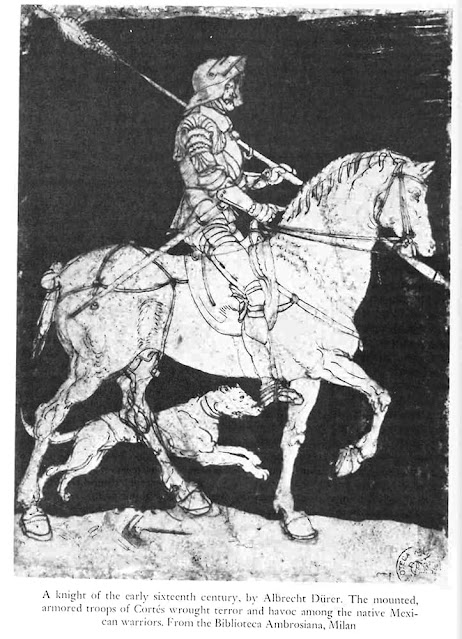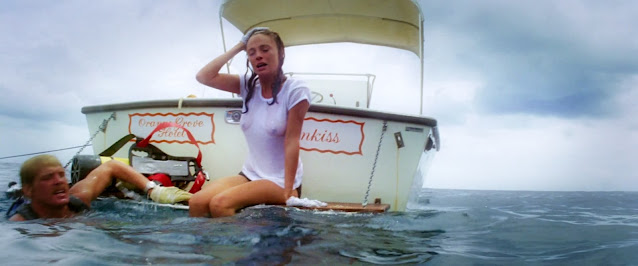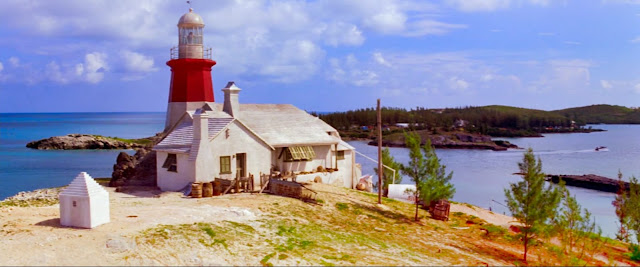Albrecht Dürer and THE DEEP
The Deep Production Designer Tony Masters incorporated the work of German Renaissance artist, Albrecht Dürer (1471-1528), into the set of Romer Treece's St. David's Lighthouse. Dürer's connection to Bermuda's maritime history can be found in the work of Smithsonian curator of Naval History, Mendel Peterson, who Bermudian explorer Teddy Tucker once described as the founder of marine archaeology (LookBermuda, 2014). Peterson cites Dürer in his 1975 book The Funnel of Gold.
 |
| The Funnel of Gold by Mendel Peterson |
According to Peter Benchley, in the 1960s Teddy Tucker's family home became a base camp for maritime experts from the Smithsonian Institution, including Mendel Peterson.
 |
| Tucker and Peterson on board The Brigadier and Kings Point, Bermuda c1960s (Source Teddy Tucker Adventure is my Life) |
When Peterson documented some of Tucker's findings in Funnel of Gold he described Dürer's 1520 visit to the Brussels Town Hall to view the objects sent to the King of Spain by Hernan Cortes:
"I saw the things which have been brought to the King from the new land of gold, a sun all of gold a whole fathom broad, and a moon all of silver of the same size, also two rooms full of armour of the people there, and all manner of wondrous weapons of theirs, harness and darts, very strange clothing, beds, and all kinds of wonderful objects of human use, much better worth seeing than prodigies. These things were all so precious that they are valued at 100,000 florins. All the days of my life I have seen nothing that rejoiced my heart so much as these things, for I saw amongst them wonderful works of art, and I marvelled at the subtle Ingenia of men in foreign lands. Indeed I cannot express all that I thought there." (Conway, 1958)
Peterson described how in 1519, the Aztec king Montezuma (or Montezuma II), attempted to prevent the conquest of his Aztec capital Tenochtitlan by bribing Cortes to leave the country. The bribe consisted of the rich gifts that Cortes quickly sent back to Spain before he left Veracruz to conquer Tenochtitlan. Montezuma's treasure sailed past Bermuda and on to Seville where it was quickly delivered to the Holy Roman Emperor Charles V (1500-1558). Peterson illustrated Cortes' troops using Dürer’s Knight on Horseback, Facing Right, with a Dog.
 |
| Dürer’s Knight on Horseback, Facing Right, with a Dog from Mendel Peterson's The Funnel of Gold. The print used by Peterson can be seen in the Biblioteca Ambrosiana catalogue at the University of Notre Dame. |
Funnel of Gold included Peterson's first hand account of working in Bermuda with Teddy Tucker, the Canton brothers (Tucker's brothers-in-law) and photographer Peter Stackpole, all of whom are linked to the birth of maritime archaeology in Bermuda:
"... the Tucker-Canton find remains the richest historically of any discovery in the Western Hemisphere. The emerald cross is without equal for beauty and historical and intrinsic value, being the most valuable single object known to have come from the sea in modern times."(Peterson, 1975)
 |
| A 'plot stack' hidden beneath Treece's table (Source Sony Pictures) |
Both DURER: The complete engravings, etchings and woodcuts and Great Prints and Printmakers by Herman J Wechsler, which is on the bottom of the stack beneath DURER, contain Dürer's The Sea Monster (Das Meerwunder).
 |
| " ... a troubling, wondrous image of the erotic ..." (Jones, 2002) (Image; Wechsler, 1967) |
The Sea Monster reveals a mysterious island that, like almost anywhere in Bermuda, is both a landscape and a seascape. Imagine that Dürer's castle tower symbolises St. David's Lighthouse, the 15th century Island has become 20th century Bermuda, the Monster personifies Cloche and his henchmen, while the bare-breasted maiden the Monster carries away is the kidnapped Gail forced to remove her top. The distant carrack off the Island's coast has become The Deep's Grifon.
Some sources consider Dürer's art to be very sexual. The Sea Monster specifically is considered "... a troubling, wondrous image of the erotic". The Deep audience would likely see more "troubling" than "erotic" at Cloche's hideout when David is restrained at knifepoint while Gail is abused. David's involuntary sexual arousal, as described in Peter Benchley's novel, presented a challenge for adaptation to the big screen, which likely led to its omission from the film version. But Dürer's engraving can be compared to the moment at Cloche's hideout as described in the novel:
 |
| (Left) the penis of Durer's Sea Monster, and, (right), David's sexual response in the novel. |
Treece's book collection also includes a copy of The Star Atlas by maritime writer S.S Rabl (Samuel Suplee Rabl) and a Spanish language edition of Björn Landström's beautifully illustrated The Ship (El Buque). El Buque contains a woodcut of a 15th century carrack (below right) almost identical to the distant vessel in Dürer's Sea Monster (below left) and Grifon.
 |
| Detail of carrack from Dürer's The Sea Monster (left) and the Breydenbach Pilgrimage carrack of 1486 (right, coloured red) from Landström's El Buque (Landström, 1961). |
Bermudian Teddy Tucker, who inspired the character of Romer Treece, captured the attention of cast and crew with stories of his own "rapture of the deep". When Tucker experienced nitrogen narcosis he hallucinated a beautiful girl who would wave and beckon him to certain death as she played a flute.
 |
| "Narcosis" derived from the Greek νάρκη (narkē), "numbness, torpor", a term attributed to Homer (Image Daily News 10 October 1976) |





Comments
Post a Comment